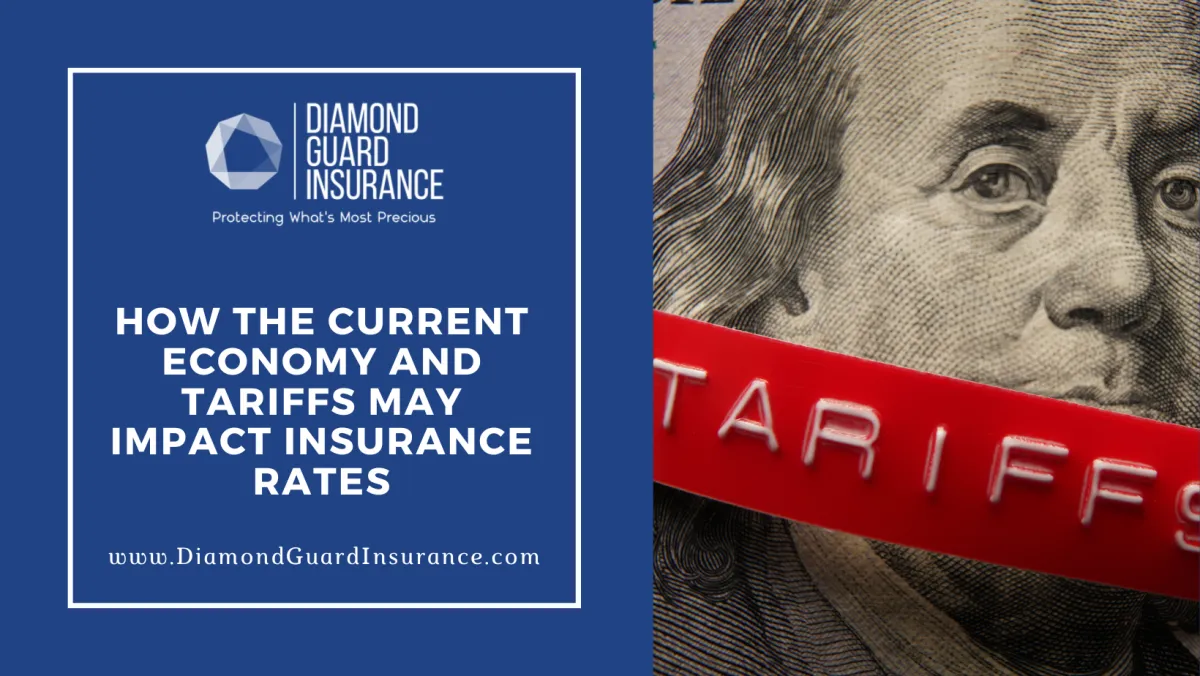
How the Current Economy and Tariffs May Impact Insurance Rates
In today’s rapidly shifting economy, many Americans are keeping a close eye on rising prices—at the grocery store, at the pump, and yes, even on their insurance bills. What many policyholders don’t realize is that economic factors like inflation, interest rates, and international tariffs can directly affect what you pay for auto, home, and even business insurance.
1. Inflation and Supply Chain Costs Drive Up Claims Payouts
When inflation is high, everything costs more—including the parts and labor required to repair a vehicle or rebuild a home after a loss. For example, the cost of auto parts has soared in recent years due to supply chain disruptions and increased demand. As repair and replacement costs climb, insurers must pay more in claims. These higher payouts often lead to higher premiums for consumers.
2. Tariffs and Trade Disruptions Add to Price Pressures
Tariffs—taxes placed on imported goods—can also have a ripple effect on insurance rates. When tariffs are imposed on materials like lumber, steel, electronics, or auto parts, the prices of those goods rise. For insurers, this means higher costs to settle claims involving construction, vehicle repairs, or manufacturing equipment.
For example:
A tariff on imported steel could drive up the cost of rebuilding commercial structures after a fire or storm.
Higher auto part prices due to tariffs on imports from key countries can make repairing a totaled vehicle more expensive.
These extra costs are eventually factored into the premiums insurers charge their customers.
3. Economic Uncertainty and Reinsurance Markets
Insurers don’t work in a vacuum. Many companies rely on reinsurance—insurance for insurers—to help manage large-scale risks like hurricanes, wildfires, or mass litigation. Reinsurers are global companies that are highly sensitive to interest rates, currency shifts, and international trade tensions. When global economic uncertainty rises (which can be triggered by tariffs or monetary policy changes), the cost of reinsurance often increases. That increase trickles down to local insurance companies—and ultimately to policyholders.
4. Higher Interest Rates: A Double-Edged Sword
On the flip side, rising interest rates can offer some financial relief to insurers. Higher rates allow insurers to earn more from their investment portfolios, which can offset some claim costs. However, this benefit doesn’t always outweigh the rapidly rising cost of claims, especially during periods of high inflation or trade disruption. The result? Premiums may still rise despite higher investment income.
What Can Policyholders Do?
While economic trends and tariffs are beyond the average person’s control, there are still steps you can take to manage your insurance costs:
Review your policy annually to ensure you’re not over- or under-insured.
Ask about available discounts (bundling, safe driving, home security systems, etc.).
Maintain a good credit score, which can influence your premium in many states.
Bottom Line
In today’s global economy, factors like tariffs and inflation don’t just affect consumer goods—they influence nearly every industry, including insurance. While rising insurance premiums may feel frustrating, understanding the forces behind those changes can help you make informed decisions and better manage your coverage.
For help reviewing your current policy or finding more competitive rates, Contact Us Today.
